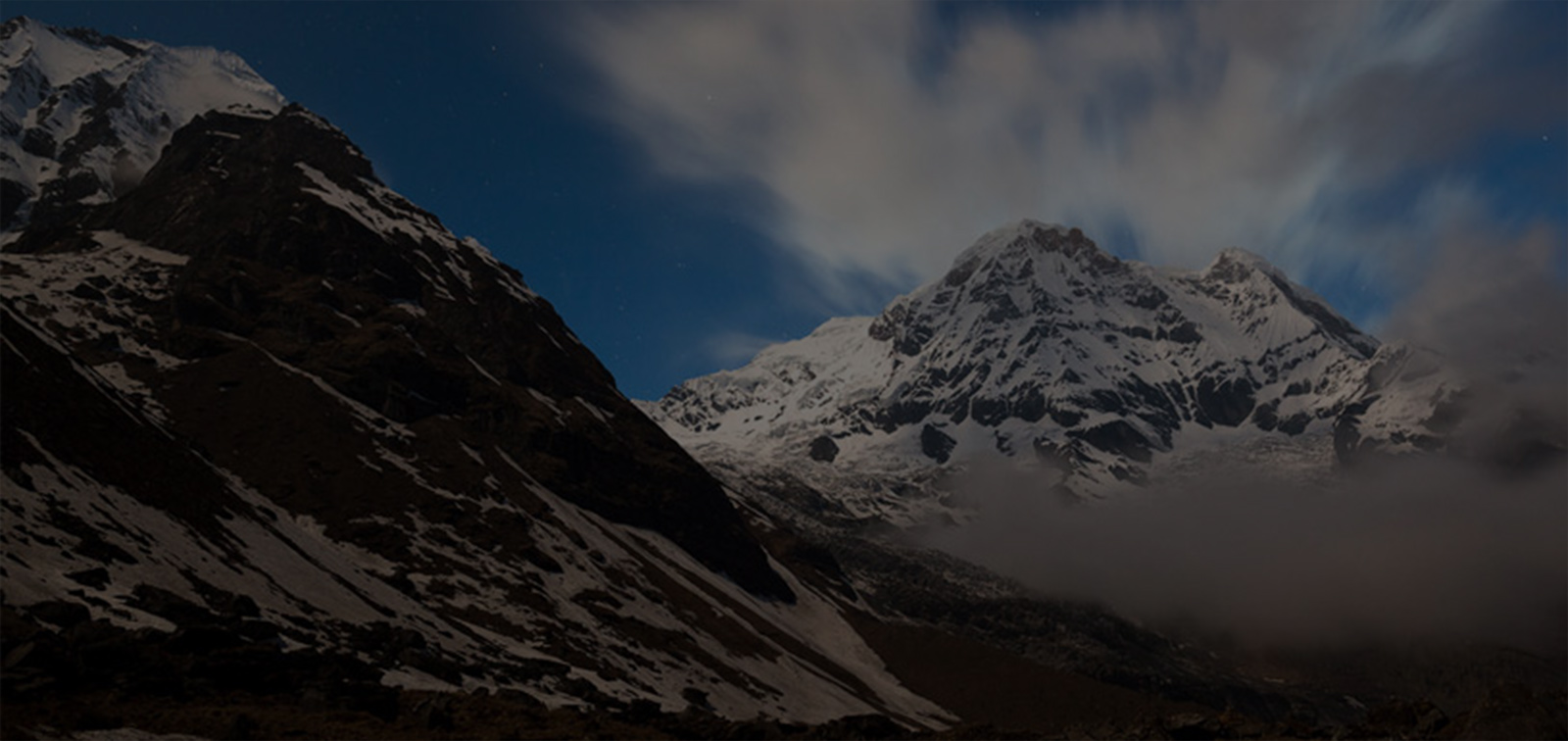The weather and climate are crucial factors that determine the ideal time for planning a trip to any region of the world, and Nepal is no exception. This Himalayan nation is a remarkable destination that can be visited throughout the year, offering trekking opportunities in the mountain regions during all seasons. Despite its narrow average width of approximately 200 kilometers, Nepal boasts a diverse topography and varied altitudes, resulting in considerable climatic variations. This diversity allows travelers to experience a wide range of vegetation and climatic conditions, even within a single day's trek.
Nepal's weather conditions are heavily influenced by the seasons and the altitude of the specific region. Generally, the weather patterns are predictable, and the climate remains pleasant throughout the year. However, it's essential to understand the distinct characteristics of each season to plan your trip accordingly.
Nepal experiences four distinct seasons:
(a) Spring: March–May
As the icy grip of winter gives way to the rejuvenating embrace of spring, Nepal awakens to a symphony of color and renewal. From March through May, the nation basks in the warmth of days that gently caress the land, with temperatures ranging from a pleasant 20°C to a balmy 30°C (68°F to 86°F).
During these months, the mornings are cloaked in a dreamlike haze, lending an air of mystery and enchantment to the landscapes. As the sun ascends higher in the azure skies, the haze dissipates, revealing a tapestry of vibrant hues that blanket the valleys and hillsides.
For trekkers and adventure seekers, spring is an exceptional time to embark on their journeys. As they ascend through the winding trails, they are greeted by a kaleidoscope of rhododendron blooms that paint the mountainsides in shades of crimson, fuchsia, and lilac. These vibrant bursts of color stand in stark contrast to the pristine whites of the snow-capped peaks that loom overhead.
At higher altitudes, the relentless winter snows begin to yield to the warmth of spring, gradually unveiling the rugged majesty of the Himalayas. Glaciers and ice fields melt, giving way to cascading waterfalls and gushing streams that carve their paths through the ancient rock formations, carrying with them the promise of renewal and vitality.
For those seeking solace in nature's embrace, Nepal's spring offers a multitude of opportunities to immerse oneself in the nation's bountiful beauty. From the lush rhododendron forests to the snow-capped summits, each step taken during this season is a celebration of life, a symphony of rebirth that resonates through every fiber of one's being.
(b) Summer: June–August
As the vibrant hues of spring give way to the sultry embrace of summer, Nepal is enveloped in the life-giving rains of the monsoon season. From June through August, the nation undergoes a transformative shift, where the skies open up to unleash a deluge of moisture that nourishes the thirsty land.
The arrival of the monsoon is heralded by the build-up of thick, moisture-laden clouds that paint the horizon in shades of steel and charcoal. The air becomes heavy with anticipation, and the rumbling of distant thunder echoes through the valleys, signaling the imminent downpour.
When the rains finally descend, they do so with a ferocity that is both awe-inspiring and humbling. Torrential downpours drench the parched earth, replenishing rivers and streams, and breathing new life into the verdant landscapes. The once-dusty trails become slick with mud, and the sound of raindrops drumming against the foliage creates a soothing symphony that reverberates through the forests.
During the peak of the monsoon season, visibility can be reduced, and the air is thick with moisture, lending an ethereal quality to the surroundings. However, for those seeking an adventure in the iconic Everest region, the early summer months offer a unique opportunity to experience the warmth and humidity that precedes the heavy rains.
As the season progresses, the intensity of the rainfall can vary, with some areas receiving heavier downpours than others. In the rain shadow regions of Dolpo, Manang, and Mustang, the summer months offer a respite from the relentless monsoon, making them ideal destinations for trekkers seeking to explore the rugged landscapes without the challenges posed by incessant rainfall.
Despite the challenges of the monsoon season, the summer months in Nepal are a time of renewal and rejuvenation. The rains breathe life into the land, replenishing the reservoirs that sustain the nation's agriculture and ensuring the continued prosperity of its people. It is a season that reminds us of the cyclical nature of life, where the storms of adversity give way to the sunshine of new beginnings.
(c) Autumn: September-November
Autumn, spanning from September to November, marks one of the most exhilarating and bustling periods in Nepal's tourism calendar. Renowned for its enticing blend of favorable weather conditions, vibrant cultural festivities, and breathtaking natural scenery, this season beckons travelers from across the globe to explore the enchanting landscapes of the Himalayan nation.
Weather-wise, autumn bestows upon Nepal a gift of clarity and tranquility. The skies remain unblemished by clouds, offering uninterrupted vistas of majestic mountain peaks, lush valleys, and pristine lakes. Rainfall becomes a rarity during this time, ensuring trekkers and adventurers can traverse the rugged terrains without the hindrance of muddy trails or sudden downpours. The crisp, refreshing air of autumn carries a hint of anticipation, inviting explorers to embark on journeys of discovery amidst nature's grandeur.
Moreover, the allure of Nepal during autumn extends beyond its natural splendor. The season aligns harmoniously with the cultural vibrancy that permeates every corner of the country. As Hindus celebrate major festivals such as Dashain, Tihar, and Chhat, the air becomes electrified with fervor and excitement. Streets are adorned with colorful decorations, and the rhythmic beats of traditional music fill the atmosphere, creating an ambiance of joyous revelry. Visitors have the unique opportunity to immerse themselves in the rich tapestry of Nepalese culture, partake in age-old rituals, indulge in delectable cuisine, and forge connections with warm and hospitable locals.
Temperature-wise, autumn in Nepal offers a delightful respite from the extremes of summer and winter. Daytime temperatures typically hover between a comfortable 20°C to 30°C (68°F to 86°F), ensuring pleasant conditions for outdoor activities, while evenings offer a gentle coolness that is perfect for unwinding after a day of exploration.
In essence, autumn in Nepal is a symphony of nature's beauty and cultural exuberance, inviting travelers to embark on a transformative journey where every moment is imbued with wonder and awe. Whether trekking through the rugged trails of the Annapurna Circuit, exploring the ancient streets of Kathmandu, or simply basking in the serenity of the Himalayan foothills, this season promises an unforgettable experience that resonates long after the journey's end.
(d) Winter: December-February
Winter, spanning from December to February, casts a serene yet invigorating spell over Nepal, transforming its landscapes into a picturesque wonderland. Defined by crisp, clear days and chilly nights, this season offers a captivating blend of tranquility and adventure for travelers seeking a unique Himalayan experience.
In the lower elevations, winter dawns with a cloak of coldness, as frost-kissed mornings yield to sun-drenched afternoons. The skies remain a brilliant blue, unmarred by clouds, offering uninterrupted views of snow-capped peaks and verdant valleys below. It's a time when the air carries a palpable sense of clarity, drawing visitors into a world where every breath feels imbued with freshness and vitality.
However, as one ascends into the higher altitudes, winter reveals its more austere side. Here, the landscape undergoes a transformation, as blankets of snow cloak the rugged terrain in ethereal beauty. While the lower Himalayan foothills may escape the grasp of winter's icy touch, mountainous regions bear witness to occasional snowfall, lending an enchanting allure to their already majestic vistas.
For trekkers and adventurers, winter in Nepal presents a unique set of challenges and rewards. While lower elevation treks remain accessible and enjoyable, with trails meandering through lush forests and picturesque villages, higher altitude routes demand careful preparation and resilience. Sub-zero temperatures and icy winds are not uncommon, requiring adequate gear and acclimatization for safe passage through these remote and rugged landscapes.
In valleys like Kathmandu, winter brings a mix of chilly mornings and mild afternoons, with temperatures fluctuating between 0°C to 20°C (32°F to 68°F). Despite the cold, the city retains its vibrant energy, with bustling markets, colorful festivals, and warm hospitality inviting visitors to explore its rich cultural tapestry.
In essence, winter in Nepal is a season of contrasts, where the tranquility of snow-covered peaks coexists with the warmth of Nepalese hospitality. It's a time when nature's beauty is at its most captivating, beckoning travelers to embark on a journey of discovery amidst the awe-inspiring grandeur of the Himalayas. Whether trekking through pristine wilderness or immersing oneself in the vibrant culture of Kathmandu, winter offers an unforgettable experience that resonates long after the journey's end.
By understanding Nepal's weather patterns and distinct seasons, travelers can plan their visits accordingly, ensuring an enjoyable and memorable experience in this stunning Himalayan nation. Whether you seek the vibrant colors of spring, the warmth of summer, the clear skies of autumn, or the crisp beauty of winter, Nepal offers a diverse range of experiences for every season.





















